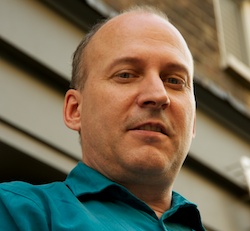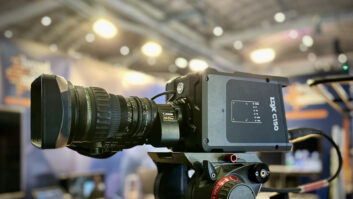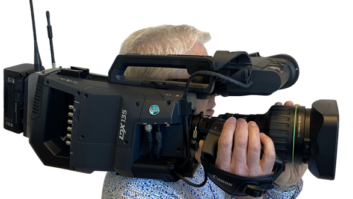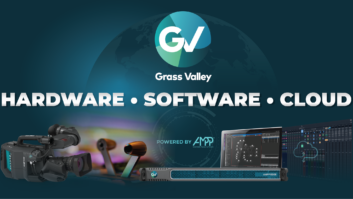
Star Trek’s chief engineer Scotty was fond of saying: “Ye cannee change the laws of physics,” but that’s what Grass Valley is intent on doing as it builds a next-generation 4K camera.
The firm’s current production cameras use three 2/3-inch sensors to record HD 1080p, but achieving higher performance means a fundamental redesign, according to Matt Allard, VP of Marketing Operations (pictured).
“We are looking at how to achieve higher resolutions for live broadcast and concluded that there are some physics limitations to doing it using 2/3-inch chip cameras going forward,” he said.
Sony is looking to get around this by not in fact developing a 4K capable camera using the conventional chipset. Instead, as highlighted in our report on the Confederations Cup trial, it is hoping to adapt broadcast lenses to the optics of its 35mm digital cameras.
“The 4K cameras that are out there tend to be single sensor which, if you are doing production one camera at a time, is fine for 4K workflow. But for live multi-camera work these cameras have limitations in focal range and depth of field,” said Allard.
“If we stay with 3x 2/3-inch chip camera and make it 4K then there are lighting issues (getting enough light to the sensor). If we go with bigger sensors we have lens issues, so we are looking at technology to come to a physics compromise. To do 4K some physics needs to change.”
He added: “This is a project in the research phase. We are investigating to see what could work in practice. We need a solution that truly matches requirements.”
Stressing that he is not knocking the advances that Sony has made at the Confederations Cup, Allard argues that all 4K live trials to date have not been true end-to-end workflows.
“4K live tests have been made in very controlled environments where the camera is only trying to do one thing,” he said. “The full range of camera coverage typically available for HD coverage of matches is not yet available. There are some interesting things you can do with 4K in terms of pan and scan or focussing on a particular aspect of a sports event, but it’s not yet a full 4K workflow. Of course, this will become practical over time, but I’m not predicting when and there are other factors, notably the business demand, which play into that.”
Grass Valley also has its eye on second screen and remote production demands from broadcasters, trends that it sees at opposite ends of the scale to high-resolution recording.
“4K will appeal to sports bars or individuals with the space to house a large screen, yet the driving factor in terms of content is on the second screen. For broadcasters the pressing issues are ‘how quickly can I create a different viewer experience on multiple different platforms? What is my second screen presence, my web and mobile presence?’ These are issues at odds with the direction of 4K.”
Grass Valley has previously stated its intent to be format agnostic, reworking technology across its product line toward IT systems that will give its customers the flexibility to work in whatever resolution they desire.
“Unlike other vendors we intend to operate across the live production equipment space. Sony is not necessarily in the server or router space and other vendors who do have that equipment are not marketing cameras or switchers. We don’t see our role as offering customers just one piece of the puzzle. So, we are performing R&D in all those areas, but I’m not going to predict whether you will see the results in 12 or 24 months time.”
Grass Valley’s editing application Edius is 4K capable in its latest version 7, being released at IBC. This is a native 64-bit application that can be powered by third-party Blackmagic Design, Matrox and AJA IO boards and features close integration with Da Vinci colour correction in 4K. The next step, also due next month, will be integrated with its suite of nonlinear production tools, Stratus and K2 servers.
By Adrian Pennington







